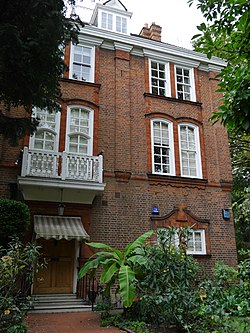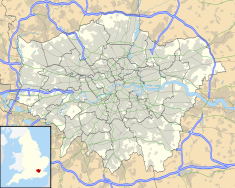
Earl of Ilchester is a title in the Peerage of Great Britain. It was created in 1756 for Stephen Fox, 1st Baron Ilchester, who had previously represented Shaftesbury in Parliament. He had already been created Baron Ilchester, of Ilchester in the County of Somerset in 1741, and Baron Ilchester and Stavordale, of Redlynch, in the County of Somerset, in 1747. These titles were also in the Peerage of Great Britain. All three peerages were created with remainder, failing heirs male of his own, to his younger brother Henry Fox, who was himself created Baron Holland in 1763. The brothers were the only sons from the second marriage of the politician Sir Stephen Fox.
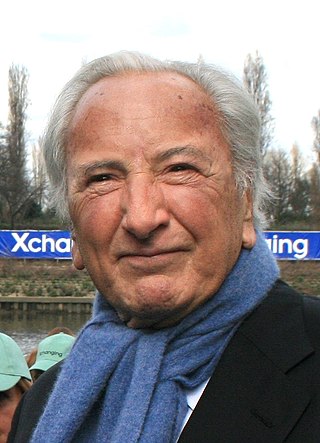
Robert Michael Winner was a British filmmaker, writer, and media personality. He is known for directing numerous action, thriller, and black comedy films in the 1960s, 1970s and 1980s, including several collaborations with actors Oliver Reed and Charles Bronson.
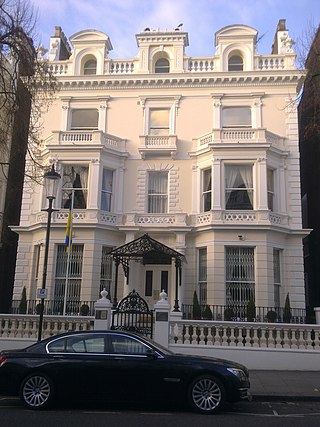
Holland Park is an area of Kensington, on the western edge of Central London, that lies within the Royal Borough of Kensington and Chelsea and largely surrounds its namesake park, Holland Park.
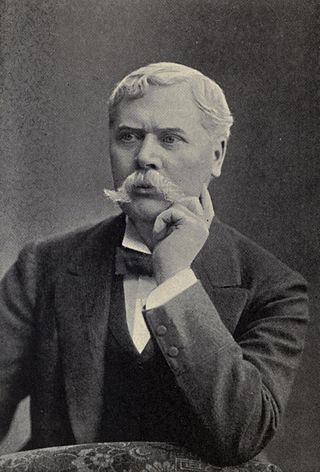
Marcus Stone was an English painter. Stone was born in London, and was educated at the Royal Academy.
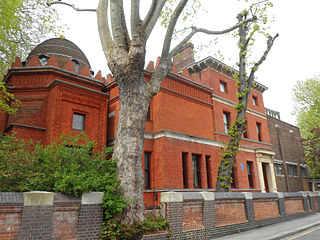
The Leighton House Museum is an art museum and historic house in the Holland Park area of the Royal Borough of Kensington and Chelsea in west London.

Sir Samuel Luke Fildes was a British painter and illustrator born in Liverpool and trained at the South Kensington and Royal Academy Schools. He was the grandson of the political activist Mary Fildes.

The Tower House, 29 Melbury Road, is a late-Victorian townhouse in the Holland Park district of Kensington and Chelsea, London, built by the architect and designer William Burges as his home. Designed between 1875 and 1881, in the French Gothic Revival style, it was described by the architectural historian J. Mordaunt Crook as "the most complete example of a medieval secular interior produced by the Gothic Revival, and the last". The house is built of red brick, with Bath stone dressings and green roof slates from Cumbria, and has a distinctive cylindrical tower and conical roof. The ground floor contains a drawing room, a dining room and a library, while the first floor has two bedrooms and an armoury. Its exterior and the interior echo elements of Burges's earlier work, particularly Park House in Cardiff and Castell Coch. It was designated a Grade I listed building in 1949.

Park House, 20 Park Place, Cardiff, Wales, is a nineteenth century town house. It was built for John McConnochie, Chief Engineer to the Bute Docks, by the Gothic revivalist architect William Burges. It is a Grade I listed building. The architectural historian John Newman writes that the architectural style of the house "revolutionized Cardiff's domestic architecture," and Cadw considers the building "perhaps the most important 19th century house in Wales."

Little Holland House was the dower house of Holland House in the parish of Kensington, Middlesex, England. It was situated at the end of Nightingale Lane, now the back entrance to Holland Park and was demolished when Melbury Road was made. Number 14 Melbury Road marks its approximate location.

The Holland Park Circle was an informal group of 19th-century artists based in the Holland Park district of West London, England, especially in Melbury Road and Holland Park Road. George Frederic Watts, Frederic Leighton, Valentine Prinsep, Luke Fildes, Hamo Thornycroft and William Burges are considered key members of the group.

8 Melbury Road is a large detached house at the Holland Park district of Kensington and Chelsea, W14 in England. Built in the Queen Anne style by the architect Richard Norman Shaw, it is a Grade II* listed building.
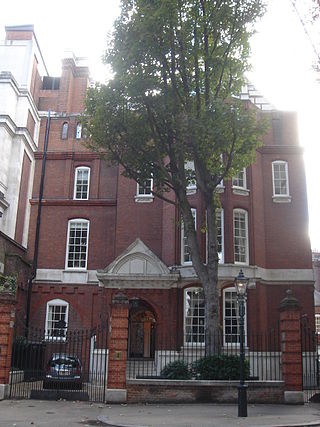
1 Palace Green is a Grade II* listed house on Palace Green, Kensington, London, England. It was built by Arts and Crafts architect Philip Webb, completed in 1870 with additions in 1874, and decorated by Morris, Marshall, Faulkner & Company.

Holland House, originally known as Cope Castle, was an early Jacobean country house in Kensington, London, situated in a country estate that is now Holland Park. It was built in 1605 by the diplomat Sir Walter Cope. The building later passed by marriage to Henry Rich, 1st Baron Kensington, 1st Earl of Holland, and by descent through the Rich family, then became the property of the Fox family, during which time it became a noted gathering-place for Whigs in the 19th century. The house was largely destroyed by German firebombing during the Blitz in 1940 and today only the east wing and some ruins of the ground floor and south facade remain, along with various outbuildings and formal gardens. In 1949 the ruin was designated a grade I listed building and it is now owned by the Royal Borough of Kensington and Chelsea.

Colin Hunter was a Scottish artist of the Victorian era. Most of his works are seascapes.

Ilchester Place is a street in the Holland Park area of Kensington, West London, England.

Melbury Road is a residential road in the Holland Park area of the Royal Borough of Kensington and Chelsea, London, England. It is known for houses owned by the Victorian Holland Park Circle, an informal group of 19th-century artists, including William Burges, Luke Fildes, Frederic Leighton, Valentine Prinsep, Hamo Thornycroft, and George Frederick Watts.

Holland Park Road is a residential road in the Holland Park district of the Royal Borough of Kensington and Chelsea, London, England. It is especially known for Leighton House, owned by the artist Lord Frederic Leighton, President of the Royal Academy and leading light of the Victorian Holland Park Circle, an informal group of 19th-century artists, including William Burges, Luke Fildes, Frederic Leighton, Valentine Prinsep, Hamo Thornycroft, and George Frederick Watts, who lived in the area.

18 Melbury Road is a large semi-detached house in the Holland Park district of Kensington and Chelsea, London W14, England, located just north of Kensington High Street. The house was built in Victorian times as a brick and stucco house with gas lighting by William Turner of Chelsea, London and originally sold on a 90-year lease.

Abbotsbury Road is a residential road in the Holland Park area of the Royal Borough of Kensington and Chelsea, West London, England.
